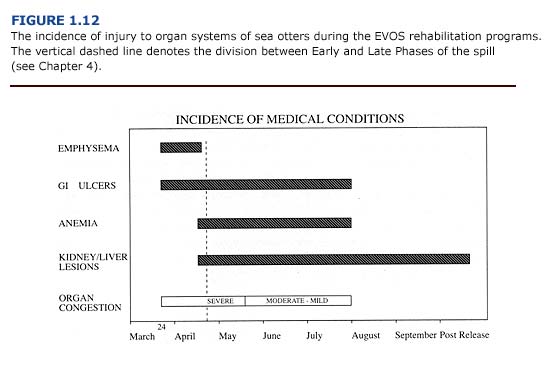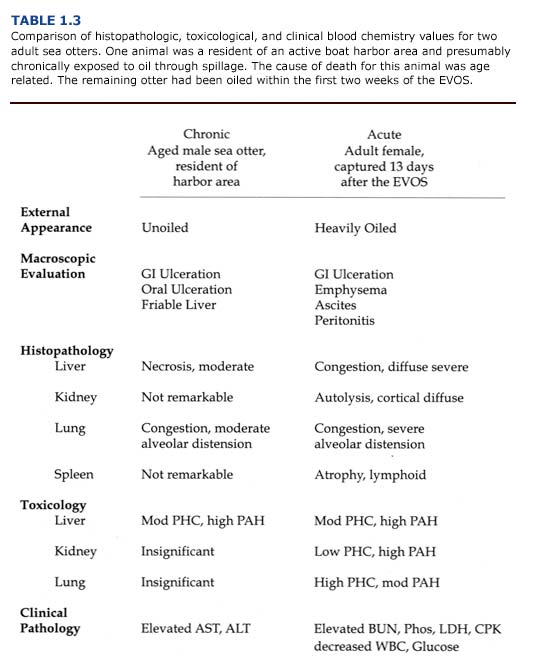There is no typical clinical, macroscopic, and microscopic profile for oiled sea otters. Not all otters will exhibit the same spectrum of lesions in all organs susceptible to damage. However, there are several noteworthy trends concerning the incidence of tissue injury for sea otters exposed to oil (Figure 1.12). The incidence of each condition will vary with: 1) type of oil and degree of weathering, 2) duration and extent of exposure, 3) age, sex, and reproductive status of the animal, 4) nutritional state and health of the animal before contamination, and 5) environmental conditions and stressors (temperature, captivity, etc.).

Interstitial and subcutaneous emphysema will usually occur during the first weeks of a spill, when the greatest concentrations of volatile hydrocarbons are present. If a heavily or moderately oiled otter be- comes hypothermic, vascular congestion can occur at this time in many organs. The effects of vascular congestion on organ function may persist long after the hypothermic event. The resulting liver and kidney dysfunction, as indicated by serum chemistry, may persist for several months. Although not usually evident upon capture, anemia may develop after the first week of captivity and persist for several months. Gastrointestinal hemorrhaging can occur throughout the rehabilitation process as a result of many factors, including oil ingestion, hypothermia, parasite infestation, and stress.
Chronic and acute exposure to oil will also result in different pathologic profiles. Table 1.3 compares the macroscopic, microscopic, and toxicologic evaluations for an aged otter that resided in an active boat harbor in Alaska to those of an adult otter that was heavily oiled during the EVOS. Both animals showed lung congestion and distension, gastrointestinal ulceration, and hepatic lesions. There was evidence of petroleum hydrocarbon accumulation in the livers of both otters. In addition to these findings, the acutely oiled otter showed an accumulation of petroleum hydrocarbons in the lungs and the kidney. Emphysema and lesions within the lymph nodes were also apparent in this animal. While the harbor animal succumbed to the cumulative effects of organ failure associated with old age, the heavily oiled otter died within two weeks of the EVOS.


